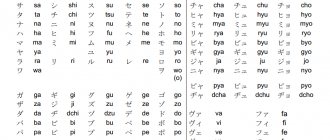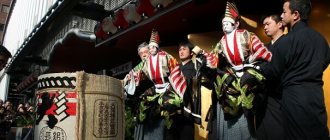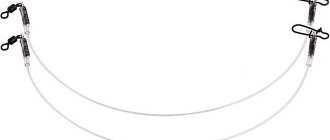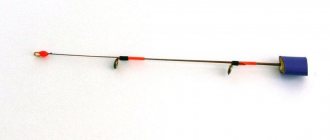Which textbook should I use to learn Japanese on my own?
It's great if you have a desire to learn Japanese, but what to do with it next? Not everyone has the opportunity to hire a tutor or enroll in courses. In this article, we looked at the features of four of the most popular textbooks today: Japanese for Beginners, Minna no Nihongo, Genki and Marugoto. The description is in order from least to most recommended, and at the end of the article there is a list of books that can make up for certain shortcomings of these four textbooks.
<The author's opinion may not coincide with yours>
First of all, we note that Japanese and Russian textbooks have some characteristic shortcomings, knowledge of which can help you when choosing a manual:
Russian textbooks:
⋄ Contains detailed explanations of grammar, but is often written in complex language that may make it difficult to understand.
⋄ May seem boring due to black and white printing, small number of pictures and text content.
⋄ They have practically no listening tasks.
⋄ May contain annoying typos.
Japanese textbooks:
⋄ They do not contain explanations of grammar at all (you need to guess intuitively, using examples).
⋄ The study of verbs begins with the form in ~ます (-masu), from which it will then be proposed to convert the verb into other forms. In terms of convenience, this system is seriously inferior to the Russian tradition, when conjugations and verb stems are taught at an early stage of learning. If you don’t understand anything now, just know that this is a very (very!) significant disadvantage of Japanese textbooks, since it will make it more difficult for you to study.
⋄ There is no middle ground in the presentation of hieroglyphs: there may be too many hieroglyphs, in tasks they can all be signed in alphabetical order (which is why you will not remember them), or, conversely, there may be too few of them.
Now let's talk about what you will encounter when you choose one or another Japanese language textbook for self-study.
“Japanese language for beginners” Nechaeva L.T.
Lyudmila Timofeevna's textbook is considered the best Russian textbook on the Japanese language. Having started their journey along the thorny road of “dess, mas and kanjas”, many choose this one.
Well, let's figure it out.
It’s not for nothing that the first phrase you see when you open the book reads:
This textbook is intended for studying Japanese in the 1st year of a language university
.
The point is that if you choose Japanese as your major at university
, you will have
about eight pairs of it every week
. You will study with different teachers using several textbooks and study different aspects of the language with them in parallel. “Japanese for Beginners” is ideal as one of the components of this process, but...
You won't be able (or won't want) to devote as much time to Japanese on your own, combining it with your studies/work. In addition, using Lyudmila Timofeevna’s textbook you can only master grammar, vocabulary and, possibly, hieroglyphs. It’s good if this is enough for you, but languages still exist in order to communicate in them.
So, phrases for dating
and self-introductions in the textbook “Japanese for Beginners”
first appear only in lesson 9
. This means that if you spend about a month studying each lesson, then after more than six months you will not even be able to introduce yourself correctly in Japanese, although this is where acquaintance always begins! Moreover, you won’t even be able to communicate with a Japanese person about anything, because the topics in the textbook are selected not according to the principle of “what language will be useful first,” but differently. It turns out that, having stopped at the 9th lesson, you will be able to tell the Japanese that “this is a table”, “this is a chair”, “the ceiling here is high”, and “the walls are white”, but you will not know how old he is, in what city in Japan he lives, what is his sister's name (family members appear only in the 14th lesson), etc.
This is called the grammar-translation approach. That is, you are taught grammatical structures and translation of sentences, but when you get into a situation of real communication, you will end up in a puddle
.
Again, it is important to clarify that when studying at university
, where there are many different Japanese classes per week, what is written above is not a defect.
Perhaps this is even a plus
, since having completed the dating topic in one Japanese pair, in a few months on another you will additionally consolidate the material from Lyudmila Timofeevna’s textbook.
There are other difficulties that may arise when studying independently using this textbook (not taking into account those indicated at the beginning of this article):
⋄ No copybooks
. Therefore, by simply repeating the written signs from the textbook in your notebook, you can learn the incorrect spelling of both the alphabet and hieroglyphs.
⋄ No answers to textbook exercises
(only for tasks on reading Japanese surnames). As a result, without a teacher, you will never understand how correctly you completed a particular task.
⋄ Still, let’s talk about typos
.
In the first part of the textbook of the 2015 edition on page 148 (lesson 11), the meanings of the hieroglyphs “left” and “right” are mixed up. Also on the next page for the character 庭 “garden” only the reading テイtei is given ,
and にわ
niva
is not indicated.
The meanings for the characters 右 and 左
⋄ in the textbook
It’s quite
difficult to navigate
; searching for specific grammatical structures can take too much time. Below you see part of its table of contents, so you can understand why.
However, if you understand the terminology, you can find
what you need with the index to the theory sections on pages 340-343.
Conclusion:
Textbook L.T. Nechaev’s “Japanese for Beginners” is suitable as a grammar reference book for self-study (if you can find in it a description of the grammatical structures you need and are not afraid of combinations like “semi-predicative adjectives”).
"Minna no Nihongo"
The most important advantage of this textbook is the large number of books in the complex.
: in addition to the main textbook, there is a workbook, audio and separate books with exercises in listening, grammar and reading (all linked to lessons).
There are also grammar comments and dictionaries in Russian
.
The educational complex also includes a DVD with dialogues played out by actors on video. Some of them (or maybe all?) can be found on the Internet.
In the video below you can meet the characters in the textbook and watch the first dialogue ▼
So with this tutorial you will
literally
swimming in waste materials
.
It will also not be difficult for you to test yourself: all books come with keys
.
The topics of the lessons in the textbook are selected with a focus on the student
: “In what order will different grammatical structures come in handy for a person who comes to Japan?”
“Minna no Nihongo” is a textbook that has been used by people around the world to study Japanese for more than twenty years, which certainly speaks to its quality. However, we cannot fail to mention its disadvantages here.
The textbook can be difficult to navigate by topic, as the table of contents focuses on grammatical structures
. That is, it immediately shows what grammatical material is covered in the lesson, but it is not always clear what life situations will be discussed (you can only guess by the names of the dialogues).
In addition, the textbook is structured in such a way that all tasks
in it
they are
“drill”, that is,
dry mining
.
By doing them, you will automatically learn to formulate grammatical structures, but this does not mean that you will be able to successfully use them in real communication situations. “Minna no Nihongo” lacks a communicative focus (sorry for the terms), you are taught to construct sentences, but not taught to apply them
.
Reading the previous paragraph, you could disagree and say that “everything is not so bad, a normal textbook.” We are not saying that it is bad, but we are saying that it is difficult to learn to communicate
. To understand what's wrong, read about the last tutorial in this article - "Marugoto".
Also o is a Japanese textbook, so it has all the disadvantages described at the beginning of the article
.
In addition, there are no copybooks for the alphabet
and no tasks for practicing it, as if ideally you should already know all this when you start learning.
Conclusion:
Using “Minna no Nihongo” you can successfully learn Japanese, but ideally do this directly in Japan, or try to find Japanese friends using existing means in Russia and practice speaking with them (in fact, it is advisable to do this when working with any textbook, because if you regularly use the language, it will be easier for you to learn, and your motivation will not fall).
"Genki" Eri Banno, Yoko Ikeda, Yutaka Ohno
This is a Japanese language textbook
written
in English
. Perhaps this will be its disadvantage for you: “Do I need to learn one language in order to learn another?” However, if you do not have such problems, let's talk about the advantages and disadvantages of Genki.
The educational complex contains a textbook, a workbook and a disc with audio recordings, which present not only listening tasks, but also voiced texts of dialogues. In addition, here you will find a selection of videos corresponding to the topics of the Genki lessons. There are examples of life situations for the grammatical structures being studied.
Here is an example of one such video ▼
Looking ahead, they will teach you how to communicate
. All texts in the textbook are dialogues, and grammar is also explained using dialogues in the videos at the link above. You are prepared for situations of real interaction with native speakers, which, in our opinion, is a plus.
Paying attention to the table of contents, we also see that the order in which the material is presented corresponds to the “needs”
for an ordinary student: first we learn to get acquainted and find out information that interests us about other people, then we understand how to speak Japanese in a store, and so on.
Moreover, since we are talking about the content, we note that the textbook is very easy to navigate
, because it presents several types of table of contents: by the topics of the lessons and by the grammatical structures that are covered in them.
Two versions of the table of contents in "Genki"
The textbook "Genki" describes grammar in clear and simple language
, an explanation is given of the difference between constructions with similar meanings, verbs are presented in dictionary form, and not in the ~ます (-masu) form.
Tasks
generally
enough
(and you can find additional ones here), and the exercises are varied and enjoyable to perform.
In the book, we are introduced to its characters
, who quickly begin to inspire sympathy.
The situations
in which they find themselves in dialogue texts are
close and interesting to students
.
Despite the fact that the textbook is black and white, it will not be boring to study
.
All dialogues are translated into English, so you can always check
whether you understood the meaning correctly. However, for the exercises there are no answers in the textbook itself. To test yourself, you will have to refer to a separate book with keys.
The difficulties include the following:
⋄ Lack of copybooks
. Although there are tasks aimed at memorizing writing, learning to write signs by hand can be difficult.
⋄ If you study alone, you will not be able to complete the useful communicative tasks of the textbook
which involve working in pairs.
Conclusion:
If you are fluent in English, you will find learning with Genki beneficial and enjoyable.
まるごと ("Marugoto")
To be honest, we like this tutorial the most, and now we will explain why.
Looking at its table of contents, you can again notice the focus on the “needs” of the student
.
If you are planning to go to Japan soon (for example, to work or study), but don’t know anything yet, then after completing the first textbook “Marugoto A1”, you will already feel comfortable and be able to talk on the most necessary topics
(you will reach the “level survival", so to speak).
The book is easy to navigate
: the table of contents, in addition to the topics, indicates what you will be able to do at the end of the lesson, and also gives basic phrases that reflect what grammar you have covered.
In addition to Japanese, the textbook uses English
, but, unlike "Genki", when working with "Marugoto"
you will need minimal knowledge of it
.
The complex includes two textbooks: “Marugoto Katsudo” and “Marugoto Rikai”. Katsudo (かつどう katsudo:) means "activity" and rikai (りかい rikai) means understanding. Thus, these are textbooks with the same topics, but slightly different approaches: katsudo focuses more on teaching communication, and rikai focuses on consolidating and practicing the material covered, as well as writing. You can use katsudo as your main textbook and rikai as your workbook.
All listening lessons are available for free on the Marugoto website. In addition to listening tasks, you can listen to dialogues and words. The speech recorded in Marugoto is slower than in other textbooks. This allows you to better hear intonations in words and sentences, and also creates convenient conditions for repeating after the speaker (to practice pronunciation
). It’s interesting that the audio is designed in such a way that the speaker’s intonations are somehow driven into your head, and you start speaking the same way as them. This ensures you progress in mastering your pronunciation.
Important: contains all the disadvantages of Japanese textbooks
described at the beginning of the article.
As for hieroglyphs
,
too few
.
Moreover, in the katsudo textbook they are always labeled in alphabetical order
, which is why your brain will not rush to remember them.
And in A1 level textbooks, everything is signed in Latin
.
This was done because “Marugoto” has a pronounced communicative orientation: the main thing is to learn to communicate. Hieroglyphs are presented so that you remember what they look like
, and could read it. After all, in fact, being able to write them by hand in the modern world is not a really important task (computers and phones produce hieroglyphs automatically)…
However, some of the shortcomings of the textbook disappear, thanks to additional Internet resources on Marugoto. On the Japan Foundation website you can download explanations of grammar and cultural aspects of the lesson, copybooks for hieroglyphs and word lists
(everything is in Russian).
What's still missing
, these are
copybooks and tasks in the alphabet
(below in the article we suggest ways to solve this problem).
It is also possible that there are not enough tasks to practice the material. However, on the special website “Marugoto Plus” there is a section with additional training in the form of online tests. There is also a cultural corner with interesting videos.
(remember that language and culture are inextricably linked!).
Although the textbook contains tasks that require working in pairs, you can learn to communicate even alone
using a special conversation section (for A1 it is on the same website in each lesson). You can literally participate in the dialogue by muting a character in the video and speaking out loud for them. And at level A2 1, in such tasks you will be like a full-fledged participant in the conversation: the actors ask a question to the camera and nod while you answer them (you can try it here).
As for the answers, you can easily check yourself
, since the keys to all exercises are given at the end of the textbook.
Well, one cannot help but notice that the textbook is very beautifully designed.
, it has characters, and it's a pleasure not only to learn from it, but also to hold it in your hands.
It is from “Marugoto” (with additions from other textbooks) that we teach our “Cyber Japanese” course.
Conclusion:
“Marugoto” will allow you to master the natural and modern Japanese language at a simple conversational level without much “strain”. Many additional materials make the learning process easier and more interesting. But you will still need a minimum knowledge of English.
General conclusion:
If you want to learn Japanese well, the ideal solution is to combine several textbooks. For example, having started studying Marugoto, practice writing according to tasks from “Japanese for Beginners”.
How to deal with shortcomings
To learn the alphabet
, you can use my guide “Japanese Alphabet”. In addition to the copybooks itself, it contains tasks for practicing reading and writing, as well as additional tasks. In addition, you can listen to the pronunciation of all the syllables of the alphabet and reading tasks in the “Lessons” section of our website (voiced by a Japanese woman). More information about the correct spelling of characters can be found on the channel “sawaの美文字レッスン calligraphy lesson by sawa” on YouTube (we made Russian subtitles for the Japanese woman’s explanations: here is hiragana, here is katakana)
If you lack listening skills
, then you can use such manuals as “Mainichi no Kikitori”, “Tanoshiku Kikou”, “Mastering Japanese by Ear”, etc.
If you don't have enough tasks on hieroglyphs
, try the books “Kanji Tamago”, “E de Wakaru Kantan Kanji”, “The most effective way to remember reading Japanese characters. Hieroglyphic tales”, etc. You can find out more about the correct spelling of hieroglyphs on this website (enter the hieroglyph in the search bar and see how it is written).
If you don't have enough reading
, look at the books in the series レベル別日本語多読ライブラリー, “Tanoshiku Yomou”, “Dokkai wo Hajimeru Anata e”, this and similar channels on YouTube, etc.
We hope you found the article useful. Of course, we did not review all existing textbooks, but then the volume of the article would turn into the volume of a book.
Like to please the author, and don’t hesitate to ask us your questions in our public page on VKontakte.
Three types of games: educational games, word games and regular games
Globally, there are three types of games for learning Japanese:
- Educational apps, exercise books, and flashcards disguised as games
- Word games that the Japanese themselves play
- Ordinary games whose developers did not think that anyone would learn Japanese with their help
This division is important to understand from the very beginning.
Games of the 1st type are suitable for beginners, those who are just starting to learn Japanese - with their help you can learn the basics:
- remember how the Japanese alphabets hiragana and katakana look and read
- learn several dozen, or even hundreds of the first kanji (hieroglyphs)
- master the basics of grammar and learn to compose simple sentences like “this is a pen” and “that is a table”
Of course, all this is very important knowledge that is necessary for mastering Japanese. This is the foundation on which everything else is built. And often this level is enough to come to Japan as a tourist and be able to read signs, understand where the store is and where the toilet is, and also make an order in a cafe or get directions.
Thus, Japanese learning games for beginners are definitely useful. But here's the thing: in fact, these are textbooks with game elements, and not real games. They have characters, enemies, combat, leveling up, graphics and sounds, but the gameplay itself is always pretty mediocre. If these were real games, they would be very boring. But if you look at it as a textbook with exercises, it becomes a pretty fun book with some pretty fun exercises.
Games of the 2nd type are all kinds of crosswords, word search games, quizzes . Since language is at least 50% words, games that are entirely made up of words will definitely prove useful.
Games of the 3rd type are suitable for everyone who likes to play games , because these are just any games in Japanese, but most often the language barrier to entry is quite high. If you go by the JLPT levels (noryoku shiken), you will need at least N4, and better yet N3 . That is, you need to know all the basic grammar, have a vocabulary of several hundred, and maybe a couple of thousand words, and also confidently know about 500 kanji and not be afraid of encountering new unknown characters and words.
The easiest option to turn any ordinary game into a tool for learning Japanese is to turn on the Japanese language in the settings . Of course, we are talking about those games that have a Japanese version. New words, expressions and grammatical structures will be absorbed gradually and naturally, because the brain will be very interested in their understanding, because without understanding it will not be possible to move forward.
Real games have an important feature - depending on the genre and the specific game, you can “adjust” the level of the language barrier. For example, in action games there will be a minimal amount of conversation and text and you can get pleasure from the game even without understanding Japanese, but in RPG dialogues are often extremely important for immersion in the world of the game and for interest. And games like visual novels consist entirely of text. In general, it is important to select games so that they are both fun and useful.
There are three large sections ahead according to the division into educational games, word games and regular games respectively. Educational games are primarily aimed at beginners, that is, at those who learn Japanese from scratch on their own, and those who know Japanese at the JLPT N4-N3 level are unlikely to find anything useful in them and maybe this section skip. But it’s better to pay attention to the section with games with words, because not everyone realizes about such games and that they can be very cool to use for learning Japanese (and it’s also fun).










